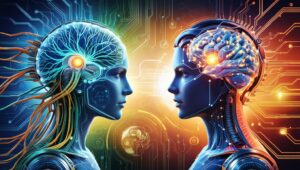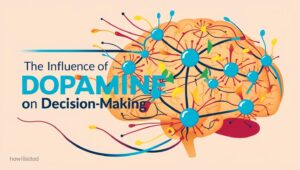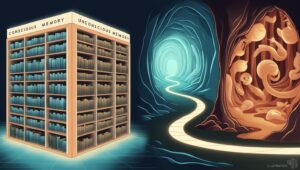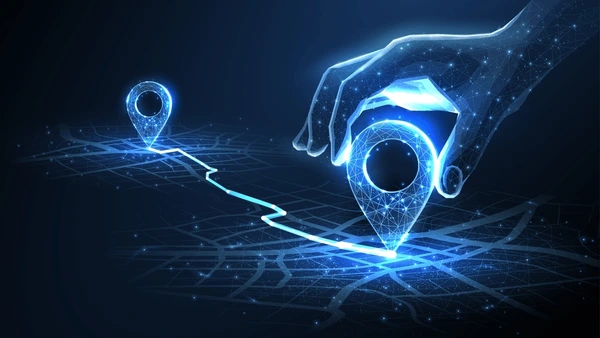
Introduction
In the presales industry, it is equally important to comprehend customer psychology as it is to present the product and services. The reality is quite different from the conventional sales models, which emphasize rational decision-making, in which customers evaluate options and make logical choices. The majority of decisions are influenced by subconscious emotions, past experiences, and brain chemistry, as demonstrated by neuroscience in customer decision-making.
In this blog, we investigate the significant role that neuroscience, specifically Brain Operating Principles (BOP), memory functions, and neurotransmitter activity, play in presales decision-making.
Neuroscience in Customer Decision-Making: Beyond the Rational Mind
Traditionally, sales and marketing assume that customers make decisions through a structured process:
- Clearly define evaluation criteria.
- Match choices against criteria.
- Based on logical evaluation, choose the best one.
But neuroscience in customer decision-making contends that most decision-making is unconscious. The brain treats outside stimuli in two different ways:
- Quick, subconscious processing: Emotional reactions based on past experiences.
- Slow, rational processing (Cortex-driven): Logical, deliberate evaluation of choices.
A significant portion of decision-making happens before the customer is even consciously aware of their choice.
Brain Operating Principles and Neuroscience in Customer Decision-Making
The brain has certain operating principles that guide decision-making:
1. Seeking Pleasure & Avoiding Pain in Customer Decision-Making
Customers subconsciously gravitate toward choices that make them feel good and avoid those that seem risky or stressful.
Sales Strategy:
- Highlight how your product and services solves pain points and creates a sense of security.
- Frame the services and solution as a positive, rewarding experience to trigger dopamine release.
2. Energy Conservation and Neuroscience in Customer Decision-Making
The brain prefers fast, easy decisions. Complex choices require effort, which the brain tries to minimize.
Sales Strategy:
- Simplify choices—offer curated options instead of overwhelming prospects with too many features.
- Use clear, contrast-based messaging (“Our Artificial Intelligence services reduces manual effort by 55%”).
3. Pattern Recognition & Familiarity in Customer Decision-Making
Familiarity makes customers feel safe. When a brand fits into a recognizable pattern, it builds trust.
Sales Strategy:
- Position your product in familiar categories to trigger pattern recognition.
- Use testimonials and case studies to reinforce known success patterns.
4. Mirroring Effect in Neuroscience in Customer Decision-Making
People tend to mimic others’ behaviors. Seeing peers or respected figures use a product builds credibility.
Sales Strategy:
- Showcase customer success stories and testimonials.
- Use social proof (please refer to our About Us).
5. Expecting Surprises & Contrasts in Customer Engagement
Unexpected, pleasant experiences boost dopamine levels, making decisions feel rewarding.
Sales Strategy:
- Create “Wow!” moments in your presales process—offer a free demo with unexpected value.
- Use contrasting elements: “With vs. Without” messaging to emphasize improvement.
Memory and Neuroscience in Customer Decision-Making
Memory plays a crucial role in shaping decisions, but it’s not always reliable. It’s divided into two categories:
1. Conscious Memory (Declarative Memory)
- Episodic Memory: Personal experiences (e.g., remembering a great sales demo).
- Semantic Memory: Facts and knowledge (e.g., remembering AI reduces workload).
2. Unconscious Memory (Non-Declarative Memory)
- Procedural Memory: Repeated exposure (e.g., hearing about a brand multiple times).
- Associative Memory: Links between concepts (e.g., “Apple = Innovation”).
- Recency Effect: More recent interactions are remembered better.
Sales Strategy:
- Reinforce messages through repetition (consistent brand presence).
- Leverage procedural memory (e.g., making the customer experience the product via trials).
- Ensure a strong last impression in presentations and meetings.
How Leading Brands Apply Neuroscience in Customer Decision-Making
IKEA’s Sales Strategy Based on Neuroscience in Customer Decision-Making
IKEA designs its stores using brain operating principles:
- Contrasts & Dopamine Triggers: Strategic product placements create a “treasure hunt” experience.
- Mirroring: Store layouts mimic real-life homes to create emotional connections.
- Procedural Memory: The store path forces customers to interact with multiple products.
Key Takeaway: Structure your sales funnel in a way that subtly guides customers toward the desired action.
How to Craft a Sales Pitch Using Neuroscience in Customer Decision-Making
To increase the effectiveness of presales efforts, tailor the pitch to different psychological profiles:
1. Promotion-Oriented Customers (Dopamine-driven)
- Focus on opportunity, innovation, excitement.
- Example: “Our AI boosts performance by 70%, giving you a competitive edge.”
2. Prevention-Oriented Customers (Serotonin-driven)
- Focus on security, reliability, and risk reduction.
- Example: “Our AI ensures zero downtime, improving system stability.”
3. Introverts vs. Extroverts in Neuroscience in Customer Decision-Making
- Extroverts respond well to group settings, social proof, and storytelling.
- Introverts prefer detailed, factual information and one-on-one discussions.
Pro Tip: Profile your audience before crafting your pitch. Adjust your messaging to resonate with their subconscious triggers.
Final Thoughts: The Neuroscience of Persuasion in Presales
Effective presales isn’t just about presenting features; it’s about influencing the brain’s natural decision-making processes. The more we understand neuroscience in customer decision-making, the better we can craft pitches that resonate and convert.
At NextGenSoft.io, we integrate cutting-edge AI and cognitive science principles to help businesses optimize their sales strategies. Our solutions leverage Generative AI, predictive analytics, and behavioral insights to craft highly personalized customer interactions. By aligning sales messaging with brain operating principles, we enable our clients to:
- Enhance customer engagement through AI-driven personalization.
- Craft sales strategies that trigger the right neurotransmitter responses (dopamine/serotonin).
- Leverage AI-powered insights to understand customer psychology in real time.
- Improve sales conversions by tailoring messaging to conscious and unconscious decision-making factors.
Whether you are in B2B enterprise sales, eCommerce, or AI-driven marketing, NextGenSoft.io helps businesses bridge the gap between neuroscience in customer decision-making and sales success.
Are you ready to transform your sales approach with AI-powered decision science? Let’s talk!





